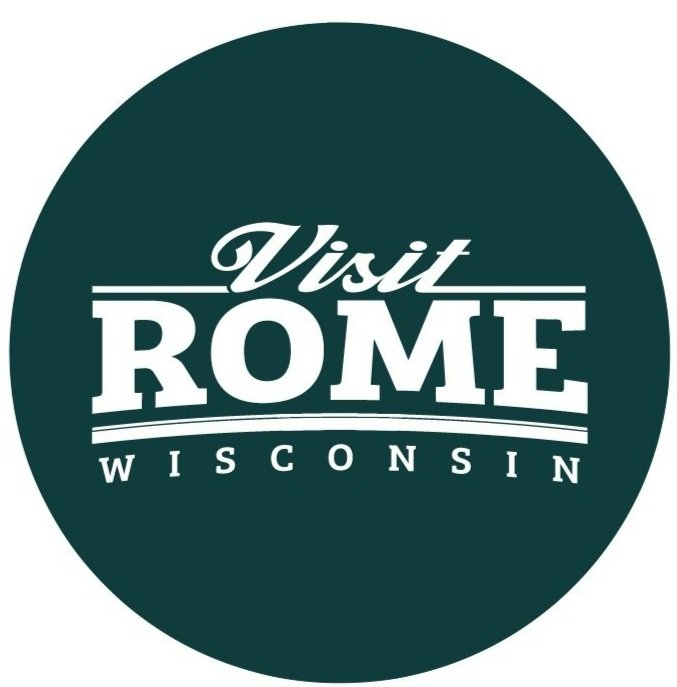
Bird Watching
The Town of Rome boasts one of the most distinctive habitats in the country. Once the bed of a glacial lake, Rome’s landscape is comprised of spectacular sand barrens and rolling pines. Home to the endangered Kirtland Warbler, Whooping Crane, Clay Colored Sparrow, and Karner Blue Butterfly, the Town of Rome is a bucket list destination for nature-enthusiast and birders. Walk, hike, bike and enjoy the rare beauty that surrounds you. Likewise, keep those ears open for birdsong!
Bird City
The Town of Rome has once again achieved “Sustained Flight” status in the Bird City Wisconsin Program. In 2016, the Town of Rome became the 96th community in the state to officially be recognized as a Bird City. Since 2016, Rome has annually submitted applications and received acceptance for Bird City Renewal. With the 2023-24 Membership Renewal, Rome joins more than 100 Bird City Wisconsin communities.
Places to Observe and Search
Buena Vista Grasslands
Buena Vista Wildlife Area is a 12,700 acre property located in southwestern Portage County. Buena Vista Wildlife Area consists of scattered parcels 10 miles east of Wisconsin Rapids and 4 miles south of Plover. The area is predominately grassland with some woodland.
Colburn Wildlife Area
Located in the north central part of Adams County. 22 miles southeast of Wisconsin Rapids. Access points are located off of Highway C, Highway G and Chicago Avenue. Carter Creek passes through the middle of the property. There is nearly 5,000 acres of marshes and forest which makes it very ideal for bird watching. Sandhill Cranes, Bald Eagles, ruffed grouse, sedge wren, veery and pileated woodpeckers are all common in this area.
Leola Marsh Wildlife Area
The Leola Marsh Wildlife Area is a 1,860 acre property located 15 miles southeast of Wisconsin Rapids. It can be accessed from County Highways D and W. This area was once a marsh land but has since been drained by the many drainage ditches built in the early 1900’s to accommodate the agricultural community. Now the wildlife area is comprised of mostly non-active grassland, the perfect habitat for prairie chickens and other grassland species. They host an annual Prairie Chicken Festival every spring.
Necedah National Wildlife Refuge
N11385 Headquarter Road Necedah
608-565-2551
Located just west of Adams County off State Highway 21 near Necedah. Established in 1939 the refuge recently finished construction of a new visitor center with interactive learning exhibits and information about wildlife located at the refuge. The refuge consist of over 43,000 acres and is home to extensive wildlife. Common sightings include red-headed woodpeckers, whooping cranes, eagles, white tailed deer, hawks and owls. The landscape is also very diverse. You can tour the land by foot, car, cross country skis or snowshoes. They offer a variety of programs for all ages.
Paul Olson State Wildlife Area
The second largest population of greater prairie chicken. The 1,650 acre property is one of four core management areas for the great prairie chicken in central Wisconsin. The property is broken down into two locations, one in Wood county and the other in Portage County. The landscape is flat and mostly agricultural. There are scattered swamplands, sedge meadows, and woodlands. This is a great location to find sedge wrens, clay-colored, savannah, and vesper sparrows. Parcel one is located 4 miles west of Rudolph via CTY C to Swedish Rd north. Parcel 2 is located 3 miles north of Rudolph via CTY O in Portage County. Open all year.
Quincy Bluff And Wetlands
The Nature Conservancy protected 3,792 acres at the Quincy Bluff and Wetlands Preserve. Today the land is owned and managed by the Wisconsin Department of Natural Resources for the people of Wisconsin. The view from the top of Quincy Bluff and the picturesque 200-foot-high sandstone mesa of Lone Rock reveals not a trace of human habitation. As far as the eye can see in every direction, there are only wooded ridges, steep bluffs, open cliffs and wetlands. South Central Wisconsin, in Adams County, 20 miles north of Wisconsin Dells.
Wild Rose Fish Hatchery
N587 State Road 22, Wild Rose WI
920-622-3527
Wild Rose is a reliable workhorse that’s been deliver fishing fun and enhancing and restoring the fish population in Wisconsin for more than a century. They grow more trout and salmon than any other and will eventually produce musky, sturgeon -Sand walleye to test anglers statewide. Hatchery visitor hours for spring and fall April and October Friday and Saturday 8 am-3pm. May and September Thursday-Saturday 8 am– 3 pm and Sunday by appointment. Please call ahead. Summer hours: 8 am until 3 pm Wednesday through Sunday. June, July and August through Labor Day weekend. Guided tours at 10 am and 1 pm (Meet at the visitor center)
Articles to “Tweet” About
How Bird-Friendly Are Your
Holiday Decorations?
~
Native Plants
(Enter your 5-digit zip code to use Audubon’s native plants database and explore the best plants for birds in your area, as well as local resources and links to more information.)

Songbird Spotting

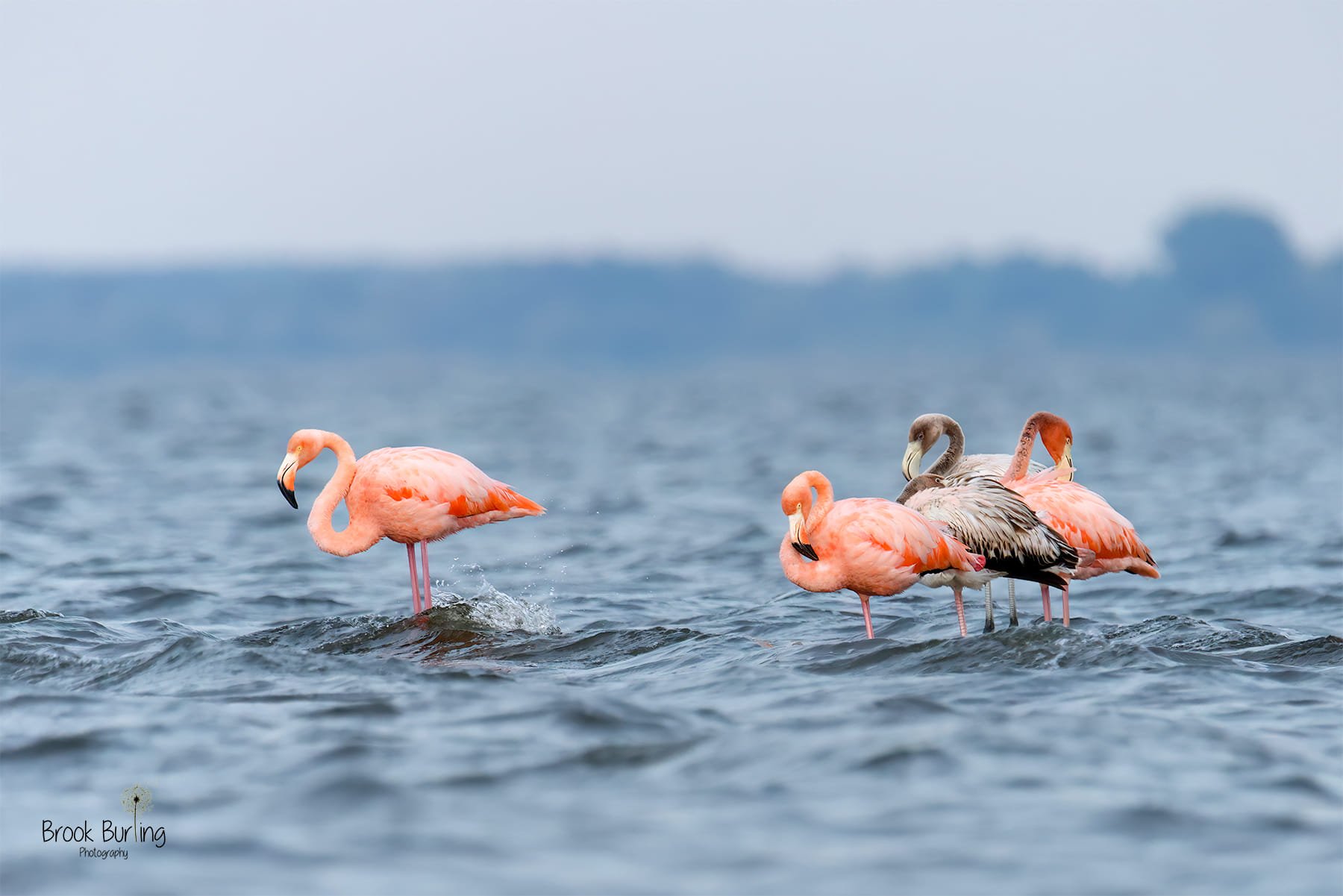
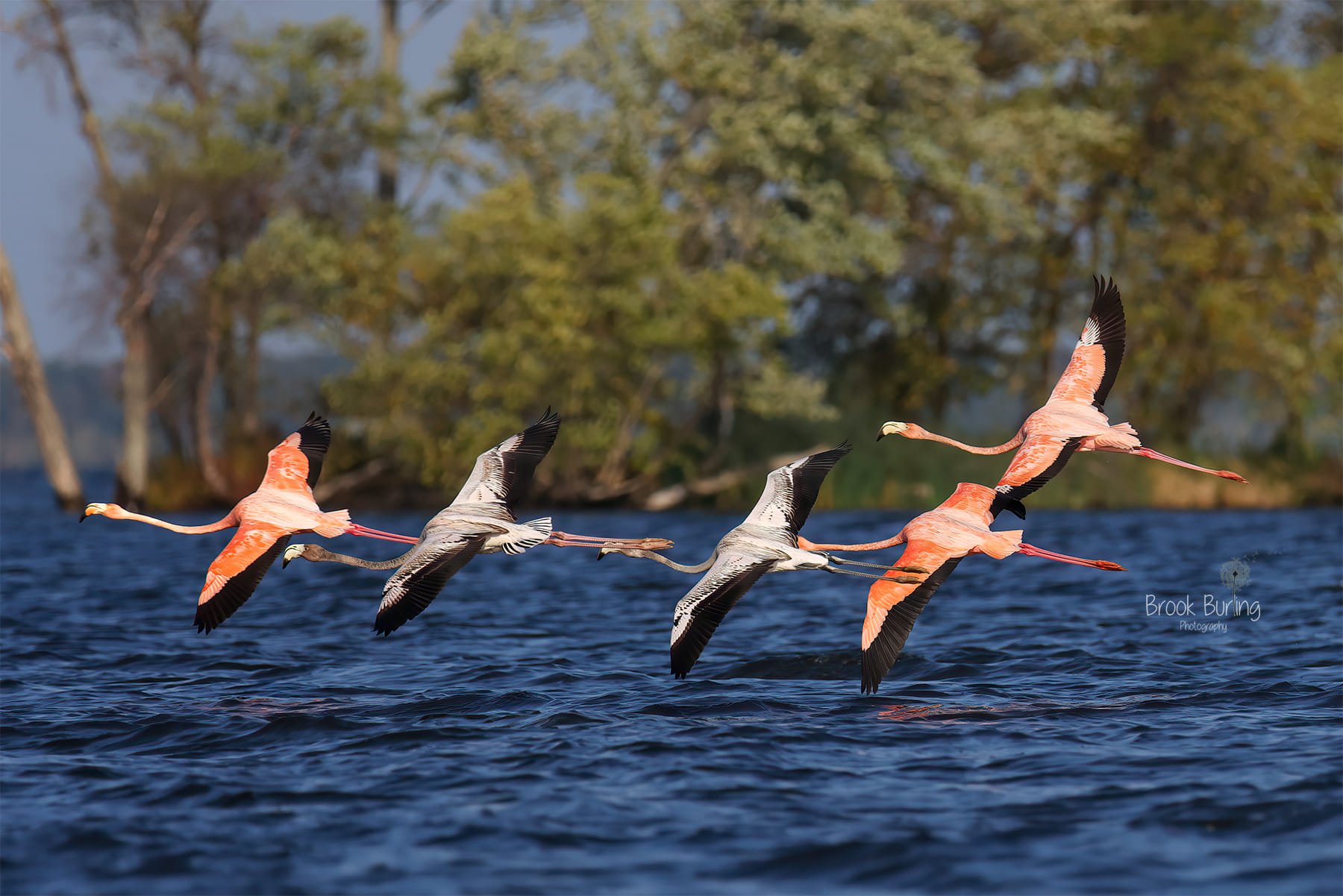
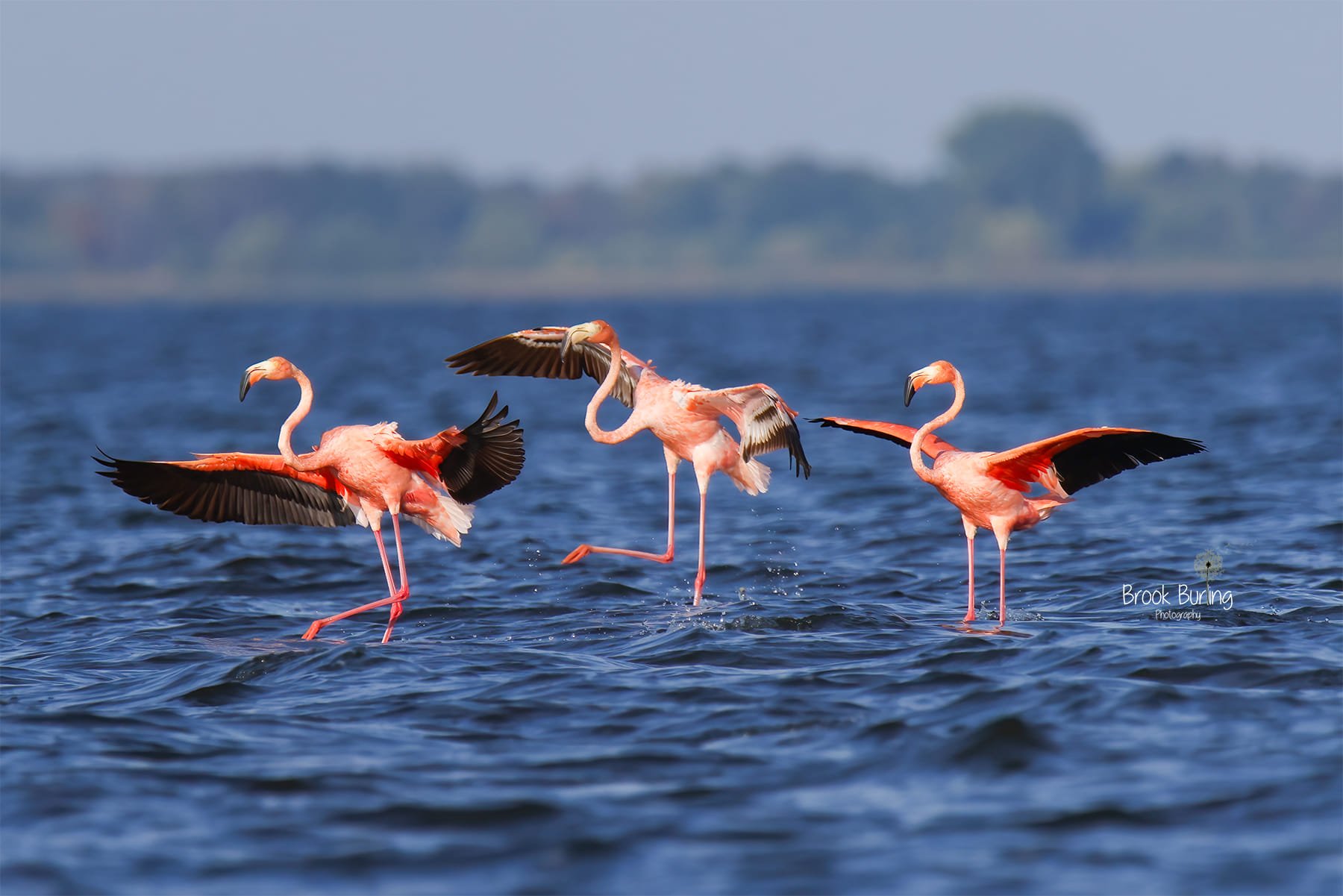
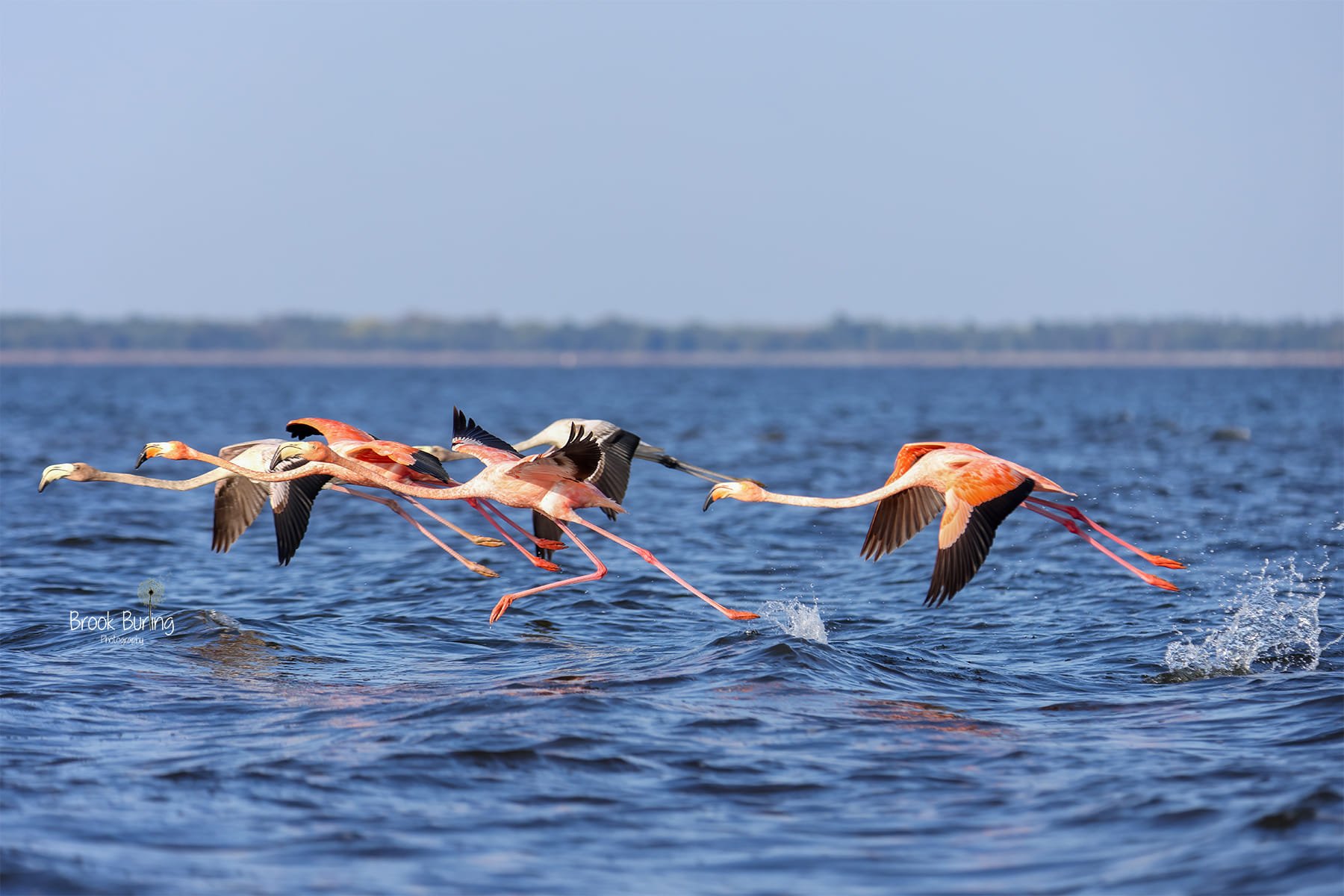
Unexpected Visitors
Most people expect to see finches or hear the “fee-bee” song of a chickadee in Wisconsin, but nobody could have expected FIVE flamboyant flamingo guests to make their stay in Rome during September/October 2023.
FAQ
-
Hurricane Idalia struck the Caribbean/Southeastern United States the end of August 2023, around the same time the flamingos would have been flying to their intended destinations. Although it isn’t 100% proven, hurricane winds caused flamingo flocks (or flamboyances) to fly off course and end up in the northern parts of the United States. This party of five were arguably the furthest North of any flock. The idea is that once the flamingos deem it safe to continue their journey, they will get back on course and fly home.
-
Well, yes and no. This group of five were the same ones that were spotted on the beaches of Port Washington, WI a few days before they appeared in Rome. However, multiple flocks were sent off-course by the winds and ended up in other places such as Pennsylvania, Ohio, North and South Carolina, Virginia, and more.
-
We’re not sure about the gender of the birds (as both males and females have the pink feathers) but we DO know that 2/5 are juvenile flamingos. They are the silver/white ones in the photographs above.
-
Unfortunately, no. Because these flamingos were born/raised in the wild and have little experience being in the presence of humans, it wouldn’t be beneficial to move them to a zoo. In addition, it is thought that trying to capture these birds would cause more harm than good due to their ability to fly naturally and their long legs getting tangled.
-
One major concern when the flamingos arrived was a food source, but thankfully the birds seemed to have found one! Although we can’t determine exactly what they ate “on vacation,” we do know that flamingos tend to sift or filter items in the water. This leads us to believe that they ate items such as plankton, algae, snails, bugs, small fish, etc.
As for things to do, they probably did a lot of sight-seeing around the lake while also trying to become acquainted with their temporary home. They also were pretty good at “hide and seek,” as many brave residents and visitors ventured out to find the birds and take photos.
-
The “fabulous five” flew off sometime around mid-October after almost two full weeks on Lake Petenwell.
